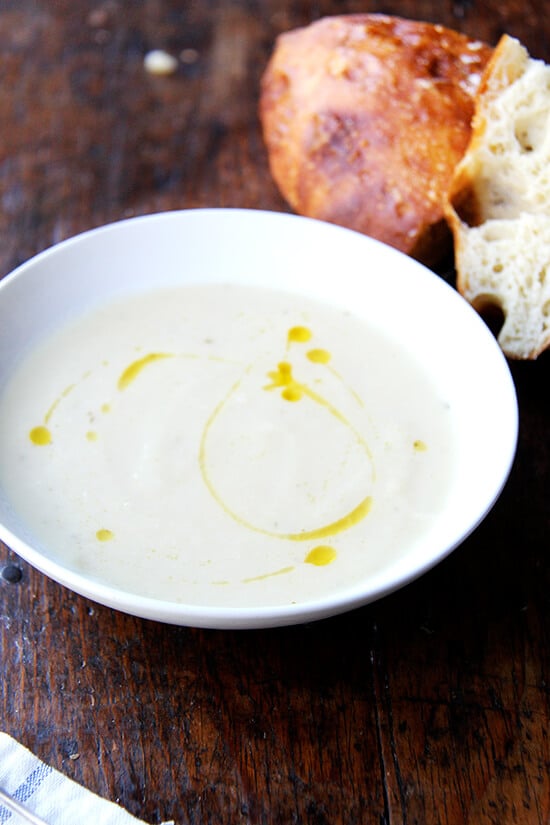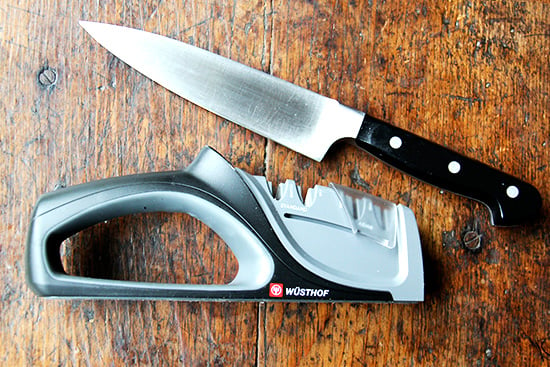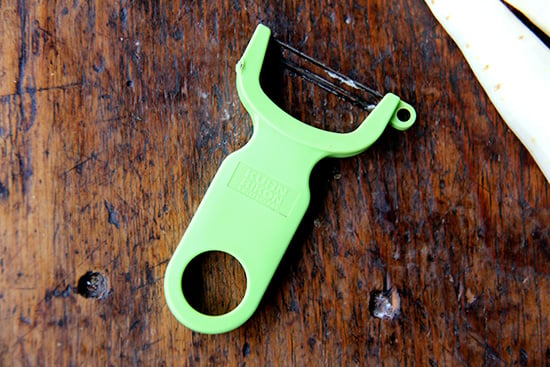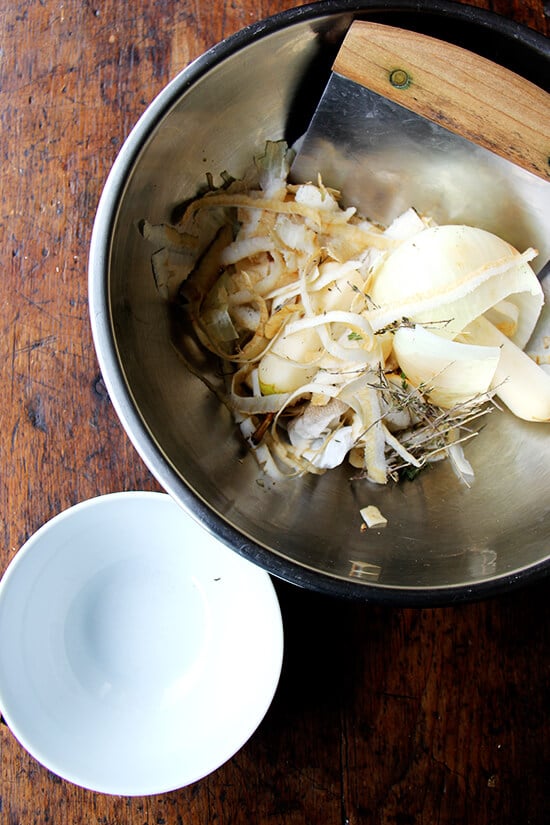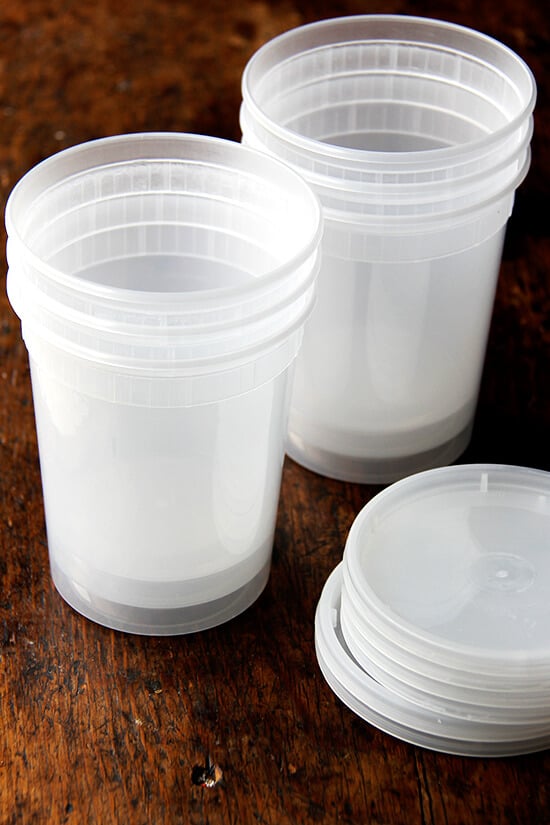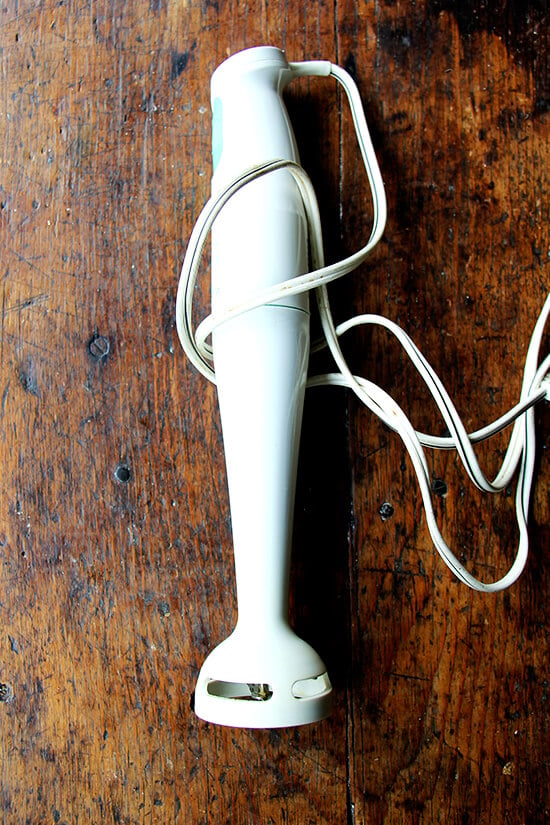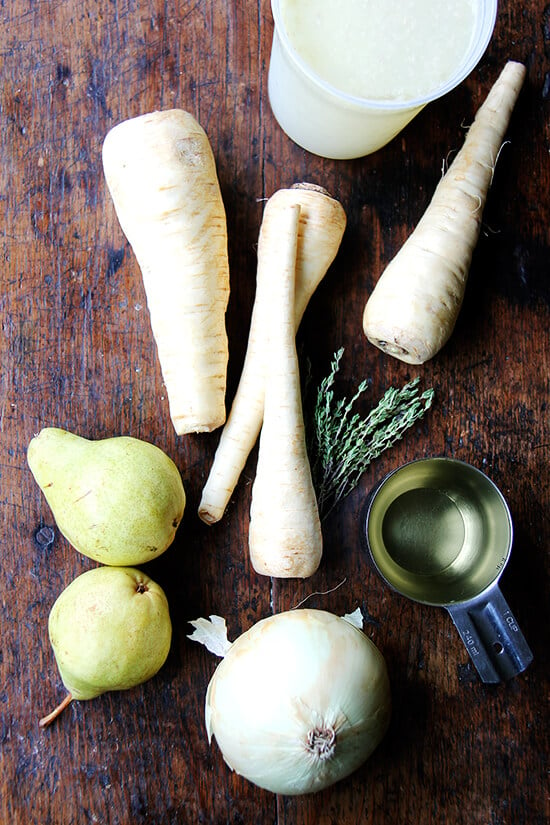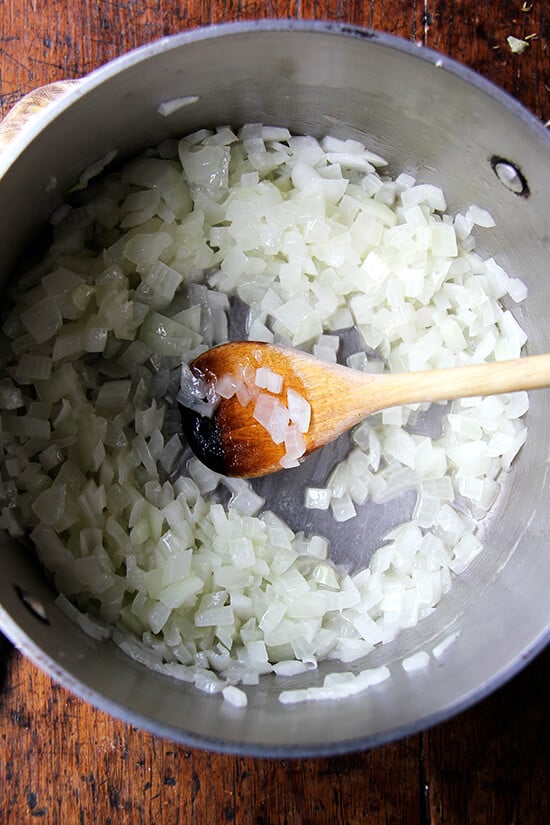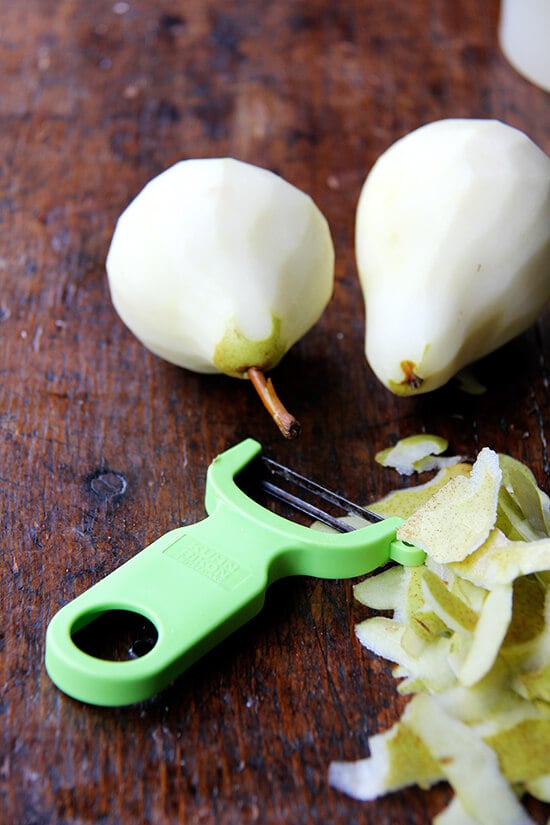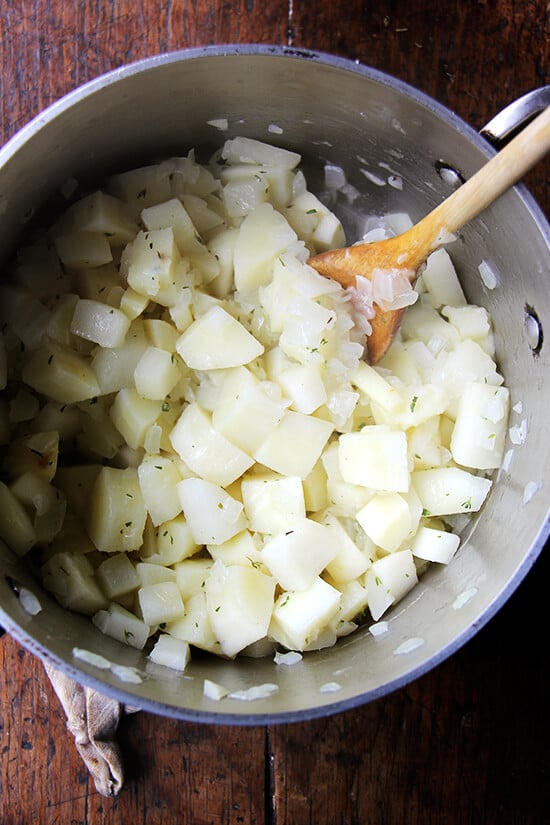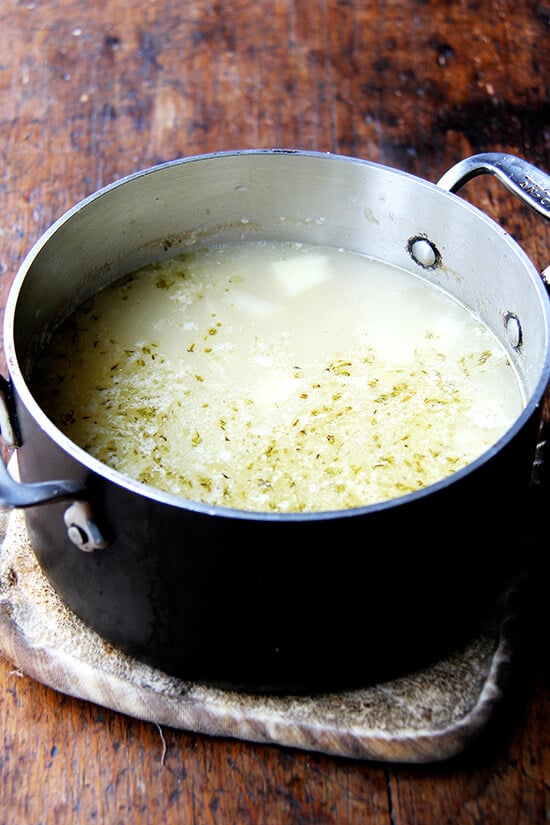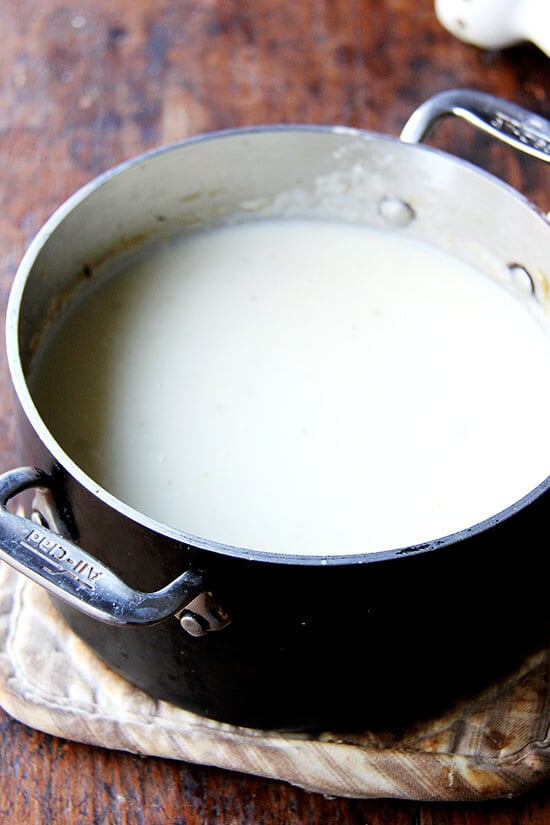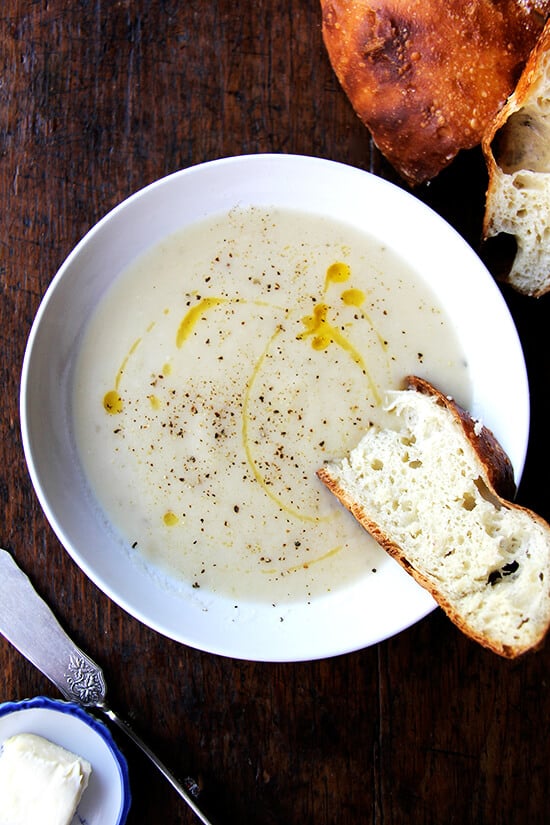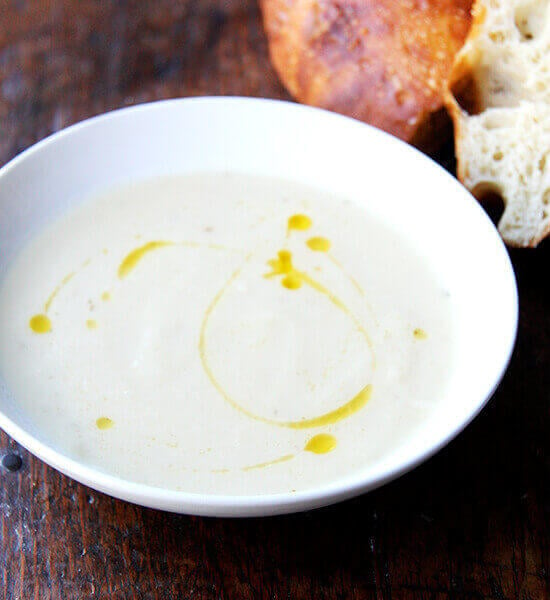Whenever I make soup, I immediately think back to my time at Fork, when I spent the better part of a year prepping carrots, parsnips, onions and celery, the four vegetables that went into every hot soup chef Thien made. Almost every other morning began with soup making, with the stovetop lined with cauldrons, with a constant sprint up and down the basement stairs, in and out of the walk-in, a large aluminum bowl in hand, hours of peeling and chopping before me. The blisters made haste, but soon calloused, making the work less painful, physically if not mentally. So many soups require a lot of chopping, but the time dedicated to the process almost always pays off: quantities that feed a crowd often at little cost. Thien liked to remind me that soup was how restaurants made money. OK, in an effort to make soup season go a little more smoothly, I’ve compiled a few thoughts below:
How to Be A More Efficient Soup Maker
- A good chef’s knife, of foremost importance when prepping vegetables, will only be helpful if it is sharp. A few months ago I bought a Wusthof knife sharpener for $30 and couldn’t be happier with how it works. This is an especially nice gadget to have on hand if you find using sharpening stones and steels awkward.
- A good peeler. This one has been my long-time favorite:
- Because soup making often requires a fair amount of peeling and chopping, you will find yourself making many trips to the garbage can. If, at the commencement of your prepping journey, you designate a large, light bowl as your garbage bin, have your bench scraper handy for whisking away those scraps, and keep a small bowl nearby for transfering your prepped vegetables to your soup pot, you will save a lot of time.
- Homemade Stock. We all know delicious soups can be made without any stock at all, but when a soup calls for chicken, beef, duck or whatever stock, homemade is best. Also, I never make anything other than chicken stock, so don’t be deterred by a recipe that calls for some sort of exotic stock — chicken stock, which is a snap to make, can almost always be substituted. Vegetable stock similarly is very easy to make not to mention fast: Homemade Vegetable Stock.
- Storage containers. These quart containers, which are BPA-free, are so handy for storing homemade stock as well as leftover homemade soup. Last year I went through a purging frenzy of getting rid of all of my old plastic storage containers, replacing everything with glass. But, the thing is, you need plastic if you want to freeze your soups and stocks — glass jars shatter in the freezer. Having the right size storage vessels on hand is a such a joy.
- An immersion blender is so handy for puréed soups. I don’t have a fancy one — it has been years since I bought this one but I don’t think I spent more than $35 or so: Friends, what soups have you been making? What are your favorite soup-making tips?
How to Make Parsnip and Pear Soup
Pear and parsnip soup ingredients: Is there any better smell than onions sweating in butter? Serve with lots of crusty bread: 4.5 from 2 reviews A doubled version of the original recipe, which calls for making a vanilla-almond oil, can be found here.
